Discover how to create a haven for birds using detailed bird feeder plans PDF. These guides offer step-by-step instructions‚ materials lists‚ and designs to craft feeders easily at home.
Overview of Bird Feeder Plans
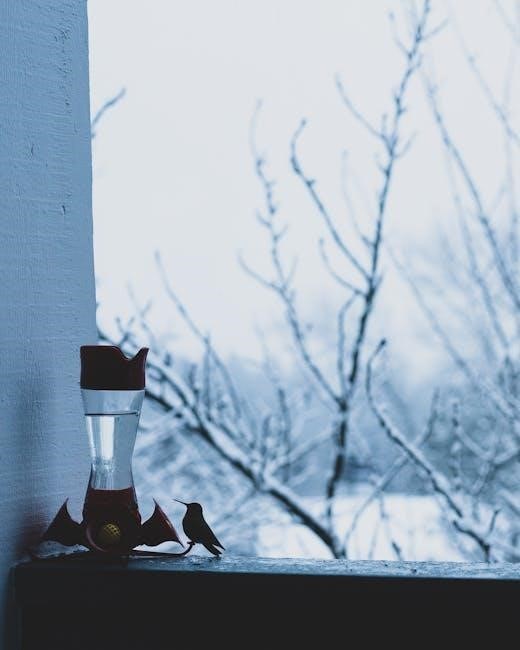
Bird feeder plans provide detailed blueprints for crafting various types of feeders‚ such as platform‚ hopper‚ and hummingbird designs. These plans often include lists of materials‚ step-by-step instructions‚ and measurements to ensure successful construction. Many plans are available as free PDF downloads‚ making it easy to print and follow along. Whether you’re a beginner or an experienced DIYer‚ these guides offer customizable options to suit different skill levels and preferences. They also highlight eco-friendly ideas‚ like using recycled materials‚ to create functional and visually appealing bird feeders for your backyard.
Importance of Using PDF Plans for Bird Feeders
Using bird feeder plans in PDF format ensures clarity and precision‚ providing detailed instructions and measurements. These plans are ideal for DIY enthusiasts of all skill levels‚ offering a structured approach to building feeders. PDFs are easily downloadable and printable‚ making them accessible for offline use. They often include illustrations and cutting lists‚ reducing errors and saving time. Additionally‚ many PDF plans are free‚ making them a cost-effective resource for creating eco-friendly and functional bird feeders that attract various bird species to your yard.
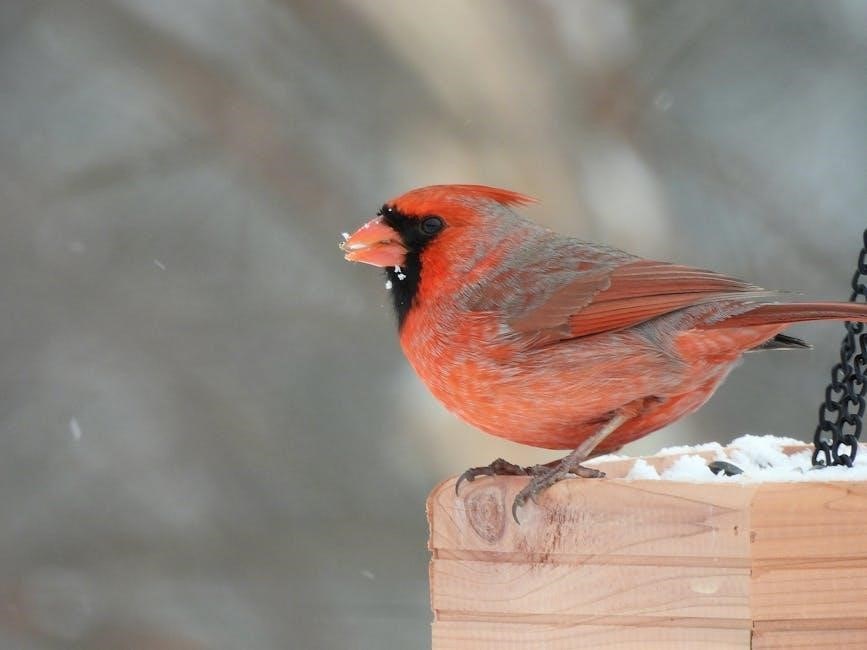
Types of Bird Feeders
Bird feeders come in various designs‚ including platform‚ hopper‚ hummingbird‚ and suet feeders‚ each catering to different bird species and feeding preferences for optimal wildlife enjoyment in your yard.
Platform Bird Feeders
Platform bird feeders are simple‚ open trays that provide an easy way to offer seeds and other treats to birds. They are typically flat‚ making them accessible to a wide variety of bird species. These feeders are often elevated on poles or hung from trees‚ ensuring birds can feed comfortably. Their design allows for easy cleaning and refilling‚ making them a practical choice for backyard birdwatchers. Platform feeders are great for ground-feeding birds like cardinals‚ sparrows‚ and doves. They can also be placed directly on the ground for birds that prefer feeding at ground level. With basic woodworking tools and materials like wood‚ building a platform feeder is a straightforward DIY project. Their open design ensures seed dispersion is even‚ attracting multiple birds at once. These feeders are an excellent option for those looking to create a welcoming space for wildlife in their yard‚ offering simplicity and functionality for both birds and birders alike.
Hopper Bird Feeders
Hopper bird feeders are versatile and practical options for bird enthusiasts. Their enclosed design features a seed compartment that dispenses food as birds eat‚ making them efficient and long-lasting. These feeders are ideal for holding larger quantities of seed‚ reducing the need for frequent refills. They often feature a transparent hopper‚ allowing you to monitor seed levels easily. Hopper feeders attract a wide variety of bird species and can be made from materials like wood‚ plastic‚ or metal. With basic tools and bird feeder plans PDF‚ you can craft a hopper feeder that suits your yard’s aesthetic. Their durable construction ensures they withstand weather conditions‚ making them a great choice for year-round use. Additionally‚ hopper feeders can be easily customized to include features like roof attachments or perches for added functionality.
Hummingbird Bird Feeders
Hummingbird bird feeders are specialized designs tailored to attract these vibrant‚ fast-moving birds. Unlike traditional feeders‚ they hold nectar—a sugar-water mixture—rather than seeds. These feeders often feature built-in ant moats and bee guards to prevent pests from accessing the nectar. Their slim‚ tube-like design allows hummingbirds to hover and feed easily. DIY plans for hummingbird feeders typically include instructions for creating feeding ports‚ attaching perches‚ and ensuring easy cleaning. Many designs emphasize durability and weather resistance‚ making them ideal for year-round use; With minimal materials and tools‚ you can craft a feeder that brings these colorful birds to your yard.
Suet Bird Feeders
Suet bird feeders are simple‚ effective designs that hold high-energy suet cakes‚ ideal for attracting woodpeckers‚ nuthatches‚ and chickadees. These feeders are typically made of wood or metal and feature a cage-like structure to hold the suet. They are easy to build and require minimal materials‚ making them a great DIY project. Suet feeders are perfect for cold climates‚ as they provide birds with the energy they need during harsh winters. Many PDF plans include designs for suet feeders‚ offering step-by-step instructions for assembly and installation. Their compact size and easy maintenance make them a popular choice for backyard bird enthusiasts.

Materials Needed
Building a bird feeder requires wood‚ plastic‚ or metal for the structure‚ along with screws‚ nails‚ and waterproof glue. Recycled materials like bottles can also be used creatively for eco-friendly designs.
Wood for Bird Feeders
Wood is a popular material for bird feeders due to its durability and natural appeal. Cedar‚ pine‚ and redwood are common choices‚ offering weather resistance and a rustic look. Always use untreated wood to ensure bird safety. Pre-cut lumber or recycled wood‚ like old fence boards‚ can also be used‚ reducing costs and promoting sustainability. Properly sealing or painting the wood can enhance its longevity. Ensure all cuts and assemblies are secure to withstand outdoor conditions and wildlife activity. This makes wood an ideal‚ versatile option for crafting bird feeders.
Plastic and Recycled Materials
Plastic and recycled materials offer eco-friendly alternatives for bird feeders. Recycled bottles‚ such as soda or milk containers‚ are inexpensive and easy to transform into feeders. Plastic tubes or containers provide durability and low maintenance. These materials are lightweight‚ weather-resistant‚ and simple to clean. Using recycled plastic reduces waste and supports sustainability. Many DIY plans incorporate these materials‚ making projects accessible even for beginners. With creativity‚ plastic and recycled items can create functional and charming bird feeders‚ attracting birds while promoting environmental conservation. This approach is both cost-effective and eco-conscious‚ perfect for crafty enthusiasts.
Metal Components
Metal components add durability and strength to bird feeders‚ making them resistant to pests and harsh weather. Elements like metal hangers‚ rods‚ or frames provide sturdy structures‚ while metal mesh can protect seed from squirrels. These components are often rust-resistant and low-maintenance‚ ensuring long-lasting feeders. Metal parts can be combined with wood or plastic for a balanced design. Detailed in PDF plans‚ metal components are easy to incorporate‚ offering a reliable and secure feeding solution for birds‚ enhancing their safety and the feeder’s longevity in various outdoor conditions.
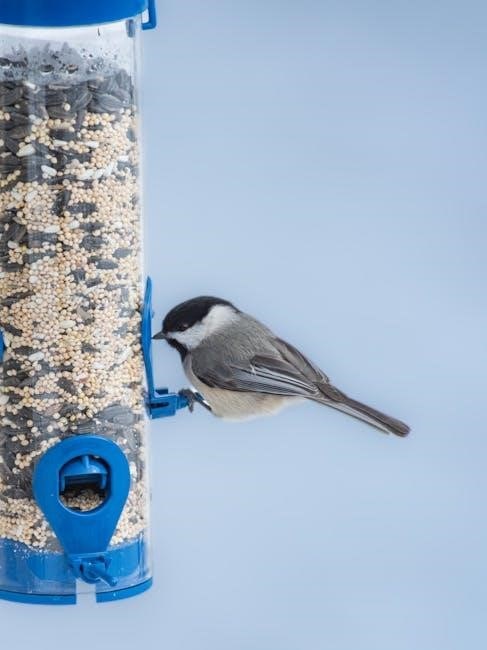
Tools Required
Essential tools include basic woodworking tools like hammers‚ screwdrivers‚ and saws. Power tools such as drills and sanders aid in creating intricate designs and smooth finishes.
Basic Woodworking Tools
Starting your bird feeder project requires essential tools like a hammer for tapping pieces together and a tape measure for accurate cuts. A square ensures corners are precise‚ while clamps hold wood steady during assembly. Hand saws or utility knives are perfect for cutting lumber to size. Screwdrivers and wrenches handle hardware installation. These basic tools provide the foundation for a successful build‚ making the process straightforward even for beginners.
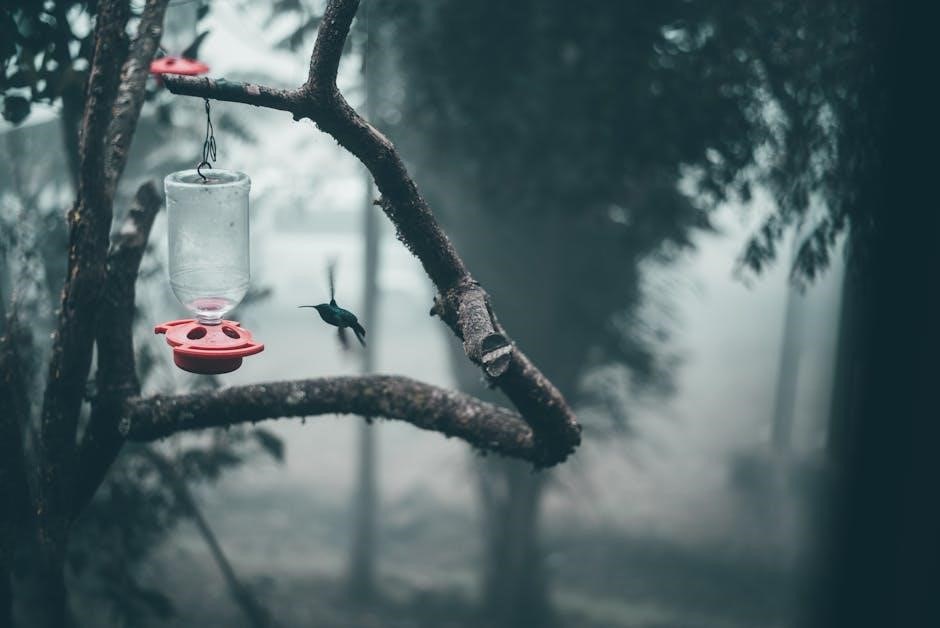
Power Tools for Advanced Designs
For intricate bird feeder designs‚ power tools enhance precision and efficiency. A circular saw is ideal for making straight cuts in wood‚ while a drill press ensures accurate hole placement. Sanders smooth out rough edges‚ and jigsaws handle curved cuts. These tools are optional but beneficial for complex projects. Always follow safety guidelines and manufacturer instructions when using power equipment. They allow for more detailed craftsmanship‚ making advanced bird feeder designs achievable and professional-looking.
Safety Equipment
Ensuring safety while building bird feeders is crucial. Essential equipment includes safety glasses to protect eyes from debris and dust masks to prevent inhaling sawdust. Work gloves provide grip and safeguard hands from cuts. A push stick or featherboard helps maintain control of wood during cuts‚ reducing accidents. Proper ventilation in the workspace is also vital. Always follow tool manufacturer guidelines and keep loose clothing tied back. Safety equipment ensures a protected and enjoyable DIY experience for all skill levels‚ making bird feeder construction both fun and hazard-free.
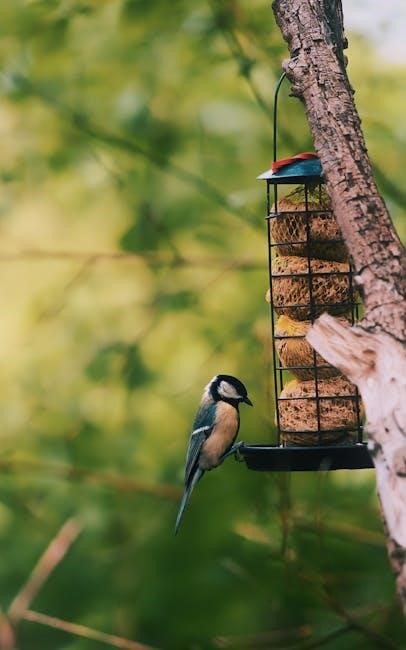
Step-by-Step Instructions
Follow detailed step-by-step guides to build your bird feeder. Start by preparing materials‚ then assemble the base‚ add compartments‚ and attach a roof and perch for functionality.
Preparing the Materials
Start by gathering all necessary materials‚ such as wood‚ plastic‚ or recycled items‚ based on your chosen bird feeder design. Measure and cut the wood according to the plans‚ ensuring accuracy for proper assembly. Sand the pieces to smooth rough edges and remove splinters. If using metal components‚ pre-drill holes for screws or bolts. Treat wood with a water-resistant sealant to extend durability. Organize all parts‚ including hinges‚ perches‚ and feeding trays‚ before moving to assembly. This step ensures everything is ready for a seamless building process.
- Measure and cut materials precisely.
- Sand wood for smooth surfaces.
- Pre-treat wood for weather resistance.
- Organize all components before assembly.
This preparation ensures a smooth and successful project.
Assembling the Feeder
Begin by attaching the base and sides using screws or nails‚ following the plan’s instructions. Ensure proper alignment for stability. Next‚ secure the feeding tray and hopper‚ making sure they are level. Attach the roof or cover to protect the seeds from rain. For platform feeders‚ assemble the frame and add the tray. Tighten all screws gently to avoid splitting the wood. Finally‚ attach the perch and hanging mechanism. Double-check all connections to ensure the feeder is sturdy and ready for use.
- Start with the base and sides.
- Secure the feeding tray and hopper.
- Attach the roof or cover.
- Add the perch and hanging mechanism.
This step requires precision to ensure the feeder is durable and functional.
Adding Roof and Perch
Attach the roof to protect the feeder from weather. Use pre-drilled holes to secure it with screws; Ensure the roof is angled for water runoff. Next‚ install the perch by screwing it into the base‚ providing a sturdy landing spot for birds. For added stability‚ you can add a small railing or lip around the feeding area. Use waterproof glue to seal any gaps. Sand all edges for smoothness. These final touches ensure the feeder is both functional and welcoming for birds. Proper assembly ensures durability and safety for wildlife.
DIY Bird Feeder Projects
Explore creative DIY bird feeder projects‚ from simple designs using recycled materials to advanced woodworking plans. Perfect for all skill levels‚ these projects attract various bird species with ease.
Simple Bird Feeder for Beginners
A simple bird feeder is a perfect DIY project for beginners‚ requiring basic tools and materials like wood‚ plastic‚ or recycled items. Start by cutting the wood according to the plan‚ then assemble the base and sides. Attach a roof and perch for functionality. Fill with birdseed and hang in a tree. This eco-friendly project is easy to customize and can be completed in a few hours. It’s a fun activity for kids and a great way to attract birds to your yard while learning woodworking basics.
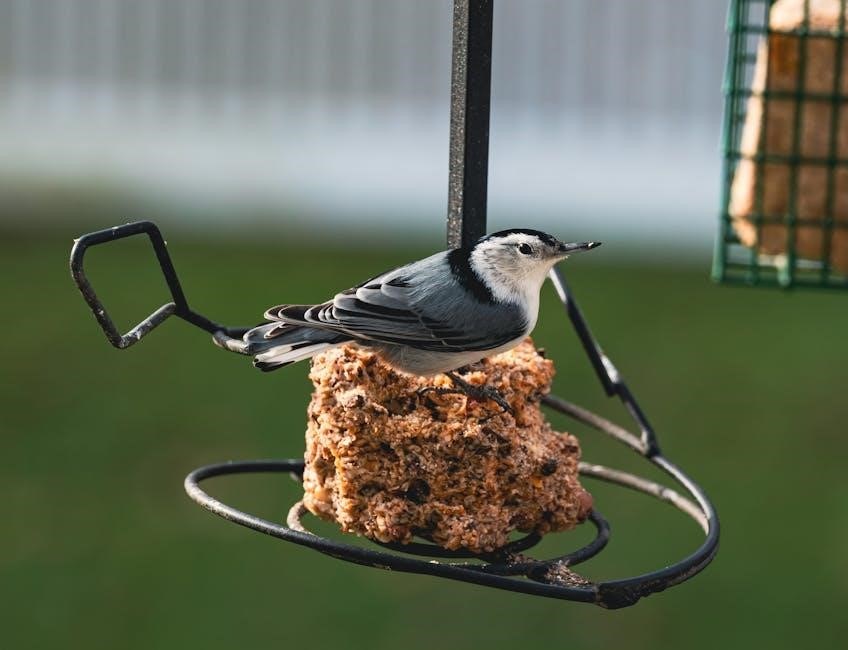
Recycled Bottle Bird Feeder
Create an eco-friendly bird feeder using a recycled plastic bottle. Clean and cut the bottle to form feeding holes and attach a small perch. Fill the bottle with birdseed‚ add a rope for hanging‚ and place it in a tree. This DIY project is perfect for beginners and kids‚ promoting environmental awareness. It’s cost-effective and easy to customize‚ offering a fun way to support local birdlife. You can also decorate the bottle or add a roof for weather protection‚ making it a charming and functional backyard accessory.
Advanced Bird Feeder Designs
Elevate your DIY skills with advanced bird feeder designs‚ perfect for experienced woodworkers. These intricate plans feature multi-level feeders‚ squirrel-proof mechanisms‚ and customizable compartments. Use durable materials like cedar or recycled metal for longevity. Incorporate features such as weighted perches‚ adjustable roofs‚ or built-in trays for easy cleaning. Some designs even include planters for greenery‚ blending functionality with aesthetics. These feeders attract a variety of bird species and add a touch of sophistication to your backyard‚ making them a rewarding project for those looking to challenge their crafting abilities.
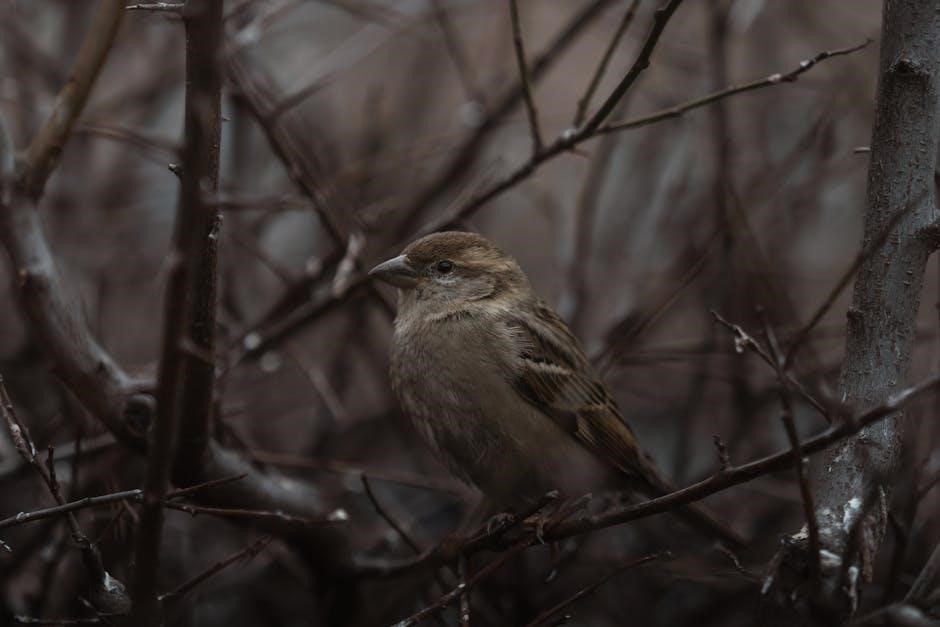
Common Issues and Solutions
Address typical bird feeder challenges like squirrel invasions and weather damage. Learn effective solutions to ensure your feeder remains functional‚ clean‚ and appealing to birds year-round.
Squirrel-Proofing Your Feeder
Squirrels can often raid bird feeders‚ stealing seeds and damaging the structure. To prevent this‚ use squirrel-proofing techniques such as weight-activated perches or cage enclosures. These methods allow birds to feed while keeping squirrels out. Additionally‚ placing feeders at least 10 feet away from trees and using squirrel-resistant materials can help. Regularly cleaning up spilled seeds and installing baffles above or below the feeder can also deter squirrels. These simple solutions ensure your bird feeder remains a haven for birds‚ not squirrels.
Weather Resistance Tips
Protecting your bird feeder from harsh weather is essential for durability and functionality. Use waterproof materials like treated wood or plastic to shield against rain and moisture. Applying a UV-resistant finish can prevent fading from sunlight. Install a roof or canopy to deflect snow and rain‚ ensuring seeds remain dry. Regularly inspect and maintain the feeder to address any damage. Elevating the feeder on a sturdy pole can also improve drainage and reduce moisture accumulation. These weather-resistant tips ensure your feeder withstands seasonal changes‚ providing a reliable feeding spot for birds year-round.
Keeping the Feeder Clean
Regular cleaning is crucial to maintain a healthy environment for birds. Remove old or moldy seeds‚ as they can deter birds and spread disease. Use a mild soap solution to scrub the feeder‚ then rinse thoroughly. Allow it to dry completely before refilling to prevent moisture buildup. Consider feeders with easy disassembly for simplified cleaning. Schedule weekly cleanings to ensure the feeder remains free from bacteria and mold‚ keeping both the birds and the feeder in optimal condition. A clean feeder attracts more birds and ensures their well-being year-round. Regular maintenance is key to a successful bird-feeding experience.
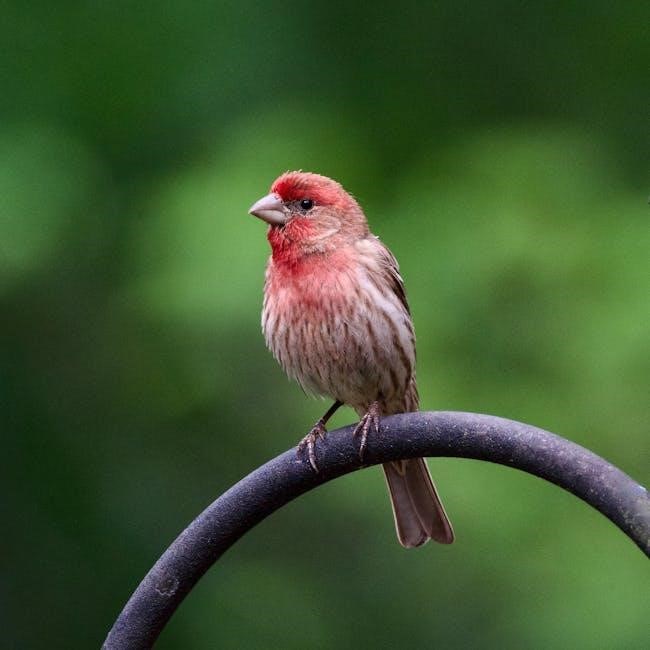
Free Bird Feeder Plans PDF
Download free bird feeder plans PDF with detailed designs‚ measurements‚ and material lists. Perfect for DIY enthusiasts‚ these plans offer easy-to-follow instructions to build feeders at home.
Where to Download Free Plans
Find free bird feeder plans PDF on websites like AllCrafts.net and Construct101. These sites offer a wide range of designs‚ from simple to advanced‚ with detailed instructions and material lists. Many platforms provide downloadable PDFs‚ ensuring easy access to blueprints for various feeder types‚ such as platform‚ hopper‚ and suet feeders. These resources are perfect for DIY enthusiasts‚ offering step-by-step guides and customizable options to suit different skill levels and preferences. Downloading these plans is straightforward‚ making it easy to start your project immediately.
Features of Free PDF Plans
Free PDF bird feeder plans typically include detailed drawings‚ measurements‚ and material lists. They offer step-by-step instructions and cutting lists‚ ensuring projects are easy to follow. Many plans are customizable‚ allowing users to adjust sizes or add personal touches. Illustrated guides and photos provide clarity‚ while the PDF format makes printing and referencing simple. These features cater to all skill levels‚ from beginners to experienced woodworkers‚ making it easy to build functional and attractive bird feeders tailored to specific bird species or yard styles.
Customizing the Plans
Free PDF bird feeder plans often allow for customization to suit personal preferences or specific bird species. Users can adjust sizes‚ modify designs‚ or add features like roofs‚ trays‚ or perches. Materials can be substituted based on availability‚ and finishes like paint or stain can enhance durability and aesthetics. Some plans even enable the addition of unique elements‚ such as squirrel-proof mechanisms or compartments for different seed types. This flexibility makes it easy to tailor the feeder to your yard’s needs‚ ensuring it attracts the desired birds while blending seamlessly with your outdoor space.
Building your own bird feeder is a rewarding project that supports wildlife and enhances your outdoor space. With PDF plans‚ it’s easy to create a haven for birds.
Benefits of Building Your Own Bird Feeder
Building your own bird feeder offers numerous benefits‚ including customization to attract specific bird species and cost-effectiveness compared to store-bought options. It also provides a fun‚ educational project for families‚ teaching kids about wildlife and DIY skills. Using recycled materials can reduce waste‚ making it an eco-friendly activity. Additionally‚ bird feeders enhance backyard biodiversity‚ creating a welcoming habitat for birds. The satisfaction of watching birds thrive in your yard adds a sense of accomplishment and connection to nature‚ making it a rewarding hobby for all ages.
Encouraging Wildlife in Your Yard
Installing a bird feeder is a simple yet effective way to attract diverse wildlife to your yard. By providing a reliable food source‚ you create a welcoming environment for birds‚ squirrels‚ and other wildlife. This not only enhances biodiversity but also offers endless entertainment and educational opportunities. Bird feeders can be tailored to specific species‚ ensuring a vibrant display of nature. Regular maintenance and strategic placement further encourage wildlife to visit‚ transforming your outdoor space into a thriving ecosystem that supports local flora and fauna year-round.
